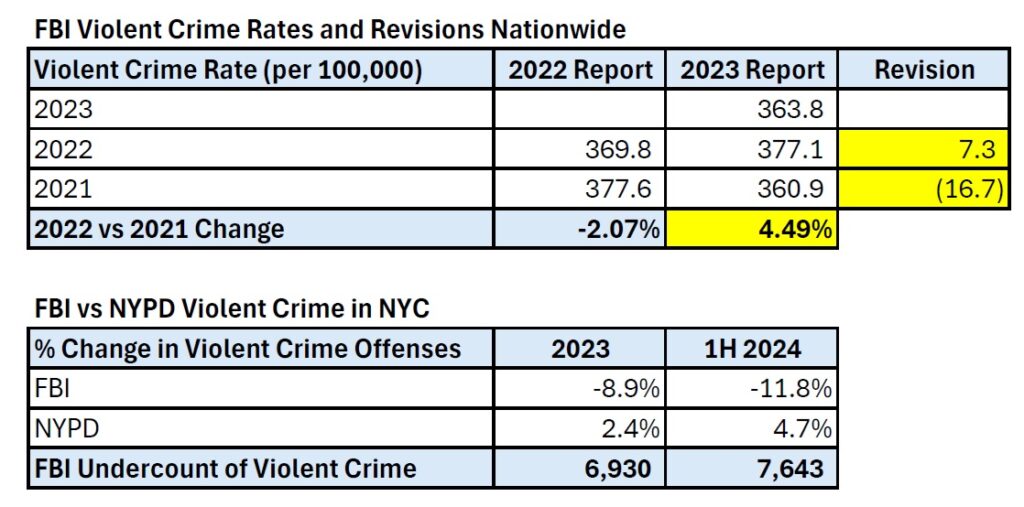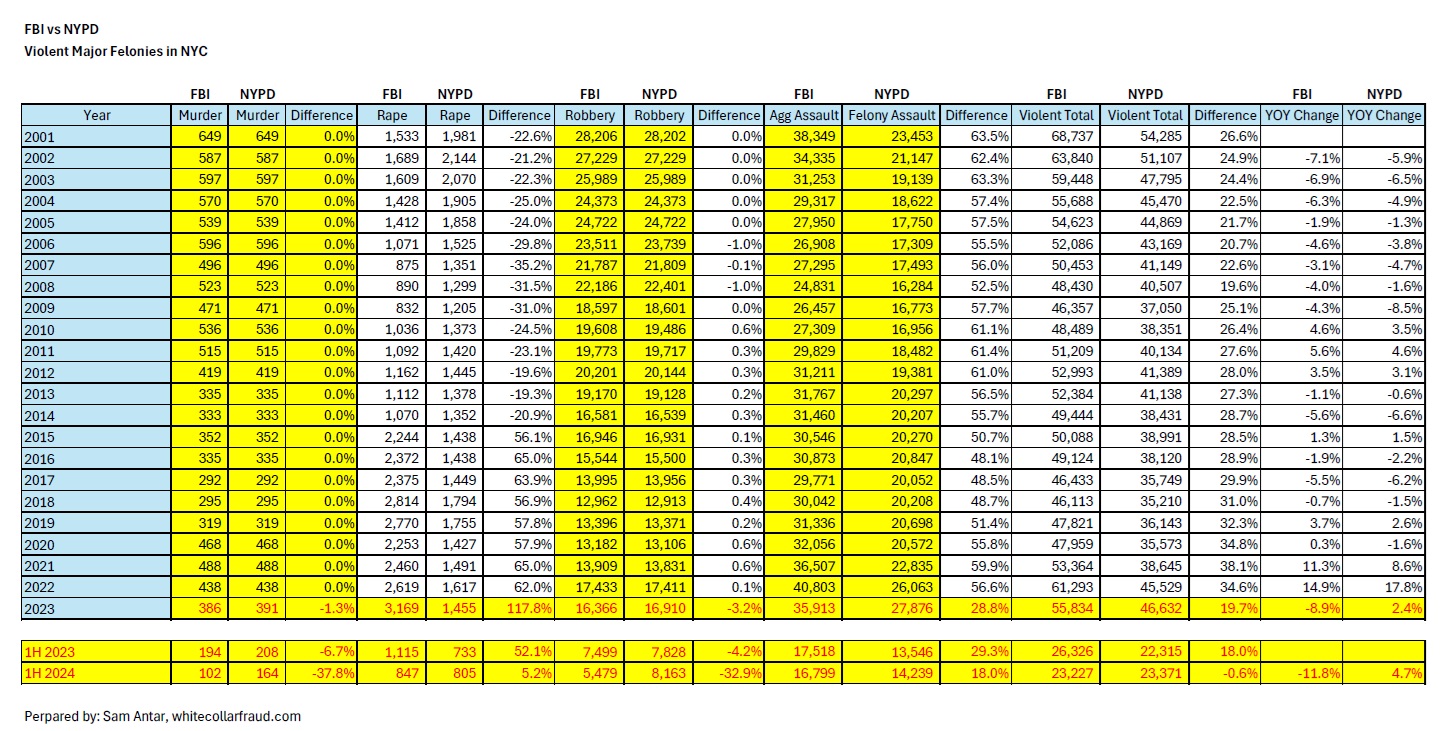Introduction
In a recent blog post, I explored the FBI’s underreporting of violent crime in New York City for 2023, raising concerns about the reliability of its national crime statistics. John Lott, writing for the New York Post, revealed that the FBI quietly revised its national violent crime rates for 2021 and 2022 in its 2023 report. This revision shows a 4.5% increase in the violent crime rate, contradicting the originally reported 2.07% decrease in the 2022 report. I will outline reasons to anticipate further upward revisions of the nationwide violent crime rate due to discrepancies between the FBI and NYPD’s violent crime figures for NYC.
Note: The chart referenced utilizes the FBI’s nationwide violent crime rate, whereas some reports cite incidents of violent crime. The discrepancy in trends when employing either metric is negligible.
FBI vs NYPD Data for NYC
The reliability of national crime statistics in the United States is facing unprecedented scrutiny following revelations of significant discrepancies between FBI and local police department data, particularly in New York City. These inconsistencies, spanning from 2023 to 2024, not only challenge our understanding of crime trends but also foreshadow a potential overhaul of crime reporting methodologies nationwide.
For over two decades, from 2001 to 2022, the FBI’s Uniform Crime Report (UCR) consistently painted a grimmer picture of violent crime in New York City compared to the statistics provided by the NYPD. This longstanding trend was largely attributed to differing definitions of violent crimes between the two agencies. However, the landscape dramatically shifted in 2023 and 2024, with the FBI’s figures suddenly plummeting below those reported by the city, igniting concerns about the accuracy of federal crime reporting.
The magnitude of these discrepancies is alarming. In the first half of 2024, while the FBI reported an 11.8% decrease in violent crime for NYC, the NYPD data indicated a 4.7% increase. This stark contrast translates to an FBI undercount of approximately 7,643 offenses. The pattern is consistent with 2023’s full-year data, where the FBI reported an 8.9% decrease in violent major felonies, contrasting sharply with the NYPD’s reported 2.4% increase – an undercount of about 6,930 offenses.
Perhaps most troubling is the discrepancy in murder statistics, a category where FBI and NYPD numbers had perfectly aligned from 2001 to 2022. For the first half of 2024, the FBI reported 102 murders in NYC, while the NYPD counted 164 – a staggering 37.8% undercount by the federal agency.
The implications of these discrepancies extend far beyond New York City. Among the nine cities with populations over one million reporting crime statistics to the FBI, NYC accounts for a whopping 36.9% of the total population. The FBI’s report of a 10.3% decrease in violent crime across these cities for the first half of 2024 is now called into question. When considering that the total reported reduction across eight of these cities was 6,741 offenses, the FBI’s undercount of 7,644 offenses in NYC could potentially negate, or even reverse, the reported decline in violent crime in America’s largest cities.
This situation bears a striking resemblance to a recent controversy unveiled by John Lott in the New York Post. Lott exposed that the FBI had quietly revised its national violent crime rates for 2021 and 2022 in its 2023 report, showing a 4.5% increase in the violent crime rate – a significant departure from the originally reported 2.07% decrease.
Inevitable Upward Revision in FBI Violent Crime Numbers
Given these precedents and the magnitude of current discrepancies, it seems inevitable that the FBI will need to undertake substantial upwards revisions of its 2023 and 2024 crime statistics. These revisions are likely to be far-reaching, potentially altering our understanding of national crime trends. The process may involve multiple rounds of adjustments as discrepancies are identified and addressed, not just for New York City, but potentially for other major metropolitan areas as well.
Conclusion
The significant underreporting of violent crimes in New York City by the FBI for 2023 and 2024 is set to trigger a cascade of revisions in national crime statistics. These revisions could substantially alter our understanding of violent crime trends across the United States. As this process unfolds, it will be essential to critically examine our crime reporting methodologies and work towards a more accurate, consistent, and transparent system of crime data collection and analysis.
Written by,
Sam Antar
© Copyright by Sam Antar. All rights reserved.
